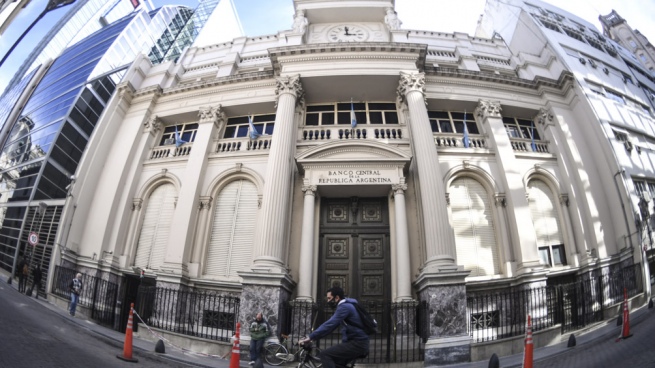The Central Bank (BCRA) will offer banks a put option on national government securities, an instrument that already exists in the stock market but is new for the link between financial entities and the monetary institution, whose objective is to reduce the volatility of the prices of Treasury securities and make them more attractive.
The measure was adopted by the Board of the Central and will apply to bonds and treasury bills that are awarded from the current month of July and maturing until December 31, 2023.
The measure is the result of dialogue between the monetary authority and the banks, which will now have a way to prevent falls in the price of securities from affecting their balance and, thus, they can acquire a greater volume of Treasury debt with less risk. .
“The put option is not equivalent to a guarantee but a financial derivative instrument that gives the holder the right, but not the obligation, to sell an underlying asset at the price set out in the contract, on a certain date or at any time until its expiration, and the issuer of this option the obligation to buy it under the same conditions previously mentioned,” the BCRA said in a statement.
With this instrumentThe banks will be able to agree on this contract with the Central, what they It will allow them to sell the Treasury securities at the agreed price in case they want to get rid of those bonds.
The BCRA implements a system to reduce the volatility of Treasury securities.
More information ▶️ https://t.co/cKtN9NBkfZ— BCRA (@BancoCentral_AR) July 12, 2022
This means that, in the event of a fall in the price of the security (Boncer, Lecer, Lede or another), the banks will have an option to sell these securities to the Central Bank, with which the exposure to risk would be much lower, which would would allow buying government debt more aggressively.
As detailed by the BCRA, the price of the “put option” It will be established by the maximum rate between the closing value of the asset on the business day prior to settlement and the weighted average Annual Nominal Rate (TNA), plus a maximum spread of 2%.
“The put option contracts on titles of the national Government awarded as of July 2022 may be exercised at any time until their term, which will be up to 15 days before the expiration of the collateral”detailed the BCRA.
“The securities that can be used as underlying assets are the national government securities awarded as of July 2022 and whose maturity is no later than December 31, 2023,” added the entity.
Also, the BCRA will continue to participate in the secondary market to reduce the volatility of Treasury instruments and, for debt securities awarded as of July 2022, with purchase bids at a price similar to the value of the primary auction plus a maximum spread of 2%.
This Wednesday the first auction of debt securities in pesos will take place under the administration of Silvina Batakis at the head of the Ministry of Economy, in which it will seek to renew around $11,000 million, to which another $480,000 million will be added at the end of the month.
Sources from the banking sector told Télam that the instrument “can be interesting” Given the performance offered by treasury securities are usually higher than those given by the BCRA and that, in addition, they are allowed to integrate a portion of lace with them.
Thus, Given the risk of a price drop, the BCRA will now be the guarantor before the bankswhich will have a payment guarantee and they will not see their balances affected or the counterpart of the deposits of individuals and companies.
In recent weeks, the monetary authority has issued about $1.2 trillion to redeem Treasury securities in the secondary market, after mutual funds and large companies sold holdings to raise cash.
Although most of that issue was reabsorbed through Leliq and Passes, the Central intends not to have to repeat the operation and hopes that the demand of the banks will now be its ally to support the price of the bonds.

















